Amyloid beta induces the morphological neurodegenerative triad of spine loss, dendritic simplification, and neuritic dystrophies through calcineurin activation
- PMID: 20164348
- PMCID: PMC2841957
- DOI: 10.1523/JNEUROSCI.4456-09.2010
Amyloid beta induces the morphological neurodegenerative triad of spine loss, dendritic simplification, and neuritic dystrophies through calcineurin activation
Abstract
Amyloid beta (Abeta)-containing plaques are surrounded by dystrophic neurites in the Alzheimer's disease (AD) brain, but whether and how plaques induce these neuritic abnormalities remain unknown. We tested the hypothesis that soluble oligomeric assemblies of Abeta, which surround plaques, induce calcium-mediated secondary cascades that lead to dystrophic changes in local neurites. We show that soluble Abeta oligomers lead to activation of the calcium-dependent phosphatase calcineurin (CaN) (PP2B), which in turn activates the transcriptional factor nuclear factor of activated T cells (NFAT). Activation of these signaling pathways, even in the absence of Abeta, is sufficient to produce a virtual phenocopy of Abeta-induced dystrophic neurites, dendritic simplification, and dendritic spine loss in both neurons in culture and in the adult mouse brain. Importantly, the morphological deficits in the vicinity of Abeta deposits in a mouse model of AD are ameliorated by CaN inhibition, supporting the hypothesis that CaN-NFAT are aberrantly activated by Abeta and that CaN-NFAT activation is responsible for disruption of neuronal structure near plaques. In accord with this, we also detect increased levels of an active form of CaN and NFATc4 in the nuclear fraction from the cortex of patients with AD. Thus, Abeta appears to mediate the neurodegeneration of AD, at least in part, by activation of CaN and subsequent NFAT-mediated downstream cascades.
Figures
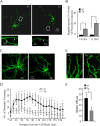
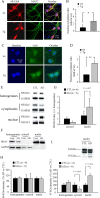
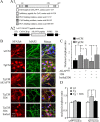
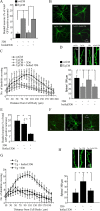
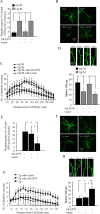
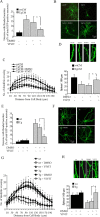
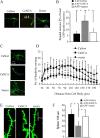
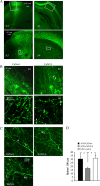
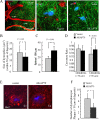
Similar articles
-
Neuritic Plaques - Gateways to Understanding Alzheimer's Disease.Mol Neurobiol. 2024 May;61(5):2808-2821. doi: 10.1007/s12035-023-03736-7. Epub 2023 Nov 8. Mol Neurobiol. 2024. PMID: 37940777 Free PMC article. Review.
-
Activation of glycogen synthase kinase-3 beta mediates β-amyloid induced neuritic damage in Alzheimer's disease.Neurobiol Dis. 2012 Jan;45(1):425-37. doi: 10.1016/j.nbd.2011.09.002. Epub 2011 Sep 13. Neurobiol Dis. 2012. PMID: 21945540 Free PMC article.
-
The p75 neurotrophin receptor promotes amyloid-beta(1-42)-induced neuritic dystrophy in vitro and in vivo.J Neurosci. 2009 Aug 26;29(34):10627-37. doi: 10.1523/JNEUROSCI.0620-09.2009. J Neurosci. 2009. PMID: 19710315 Free PMC article.
-
Cognitive decline in Alzheimer's disease is associated with selective changes in calcineurin/NFAT signaling.J Neurosci. 2009 Oct 14;29(41):12957-69. doi: 10.1523/JNEUROSCI.1064-09.2009. J Neurosci. 2009. PMID: 19828810 Free PMC article.
-
Alzheimer's disease.Subcell Biochem. 2012;65:329-52. doi: 10.1007/978-94-007-5416-4_14. Subcell Biochem. 2012. PMID: 23225010 Review.
Cited by
-
Neuritic Plaques - Gateways to Understanding Alzheimer's Disease.Mol Neurobiol. 2024 May;61(5):2808-2821. doi: 10.1007/s12035-023-03736-7. Epub 2023 Nov 8. Mol Neurobiol. 2024. PMID: 37940777 Free PMC article. Review.
-
Differential relationships of reactive astrocytes and microglia to fibrillar amyloid deposits in Alzheimer disease.J Neuropathol Exp Neurol. 2013 Jun;72(6):462-71. doi: 10.1097/NEN.0b013e3182933788. J Neuropathol Exp Neurol. 2013. PMID: 23656989 Free PMC article. Clinical Trial.
-
Q134R: Small chemical compound with NFAT inhibitory properties improves behavioral performance and synapse function in mouse models of amyloid pathology.Aging Cell. 2021 Jul;20(7):e13416. doi: 10.1111/acel.13416. Epub 2021 Jun 12. Aging Cell. 2021. PMID: 34117818 Free PMC article.
-
The toxic Aβ oligomer and Alzheimer's disease: an emperor in need of clothes.Nat Neurosci. 2012 Jan 29;15(3):349-57. doi: 10.1038/nn.3028. Nat Neurosci. 2012. PMID: 22286176 Review.
-
Analyzing dendritic spine pathology in Alzheimer's disease: problems and opportunities.Acta Neuropathol. 2015 Jul;130(1):1-19. doi: 10.1007/s00401-015-1449-5. Epub 2015 Jun 11. Acta Neuropathol. 2015. PMID: 26063233 Free PMC article. Review.
References
-
- Agostinho P, Lopes JP, Velez Z, Oliveira CR. Overactivation of calcineurin induced by amyloid-beta and prion proteins. Neurochem Int. 2008;52:1226–1233. - PubMed
-
- Aramburu J, Yaffe MB, López-Rodríguez C, Cantley LC, Hogan PG, Rao A. Affinity-driven peptide selection of an NFAT inhibitor more selective than cyclosporin A. Science. 1999;285:2129–2133. - PubMed
-
- Berridge MJ, Lipp P, Bootman MD. The versatility and universality of calcium signalling. Nat Rev Mol Cell Biol. 2000;1:11–21. - PubMed
Publication types
MeSH terms
Substances
Grants and funding
LinkOut - more resources
Full Text Sources
Other Literature Sources
Miscellaneous
